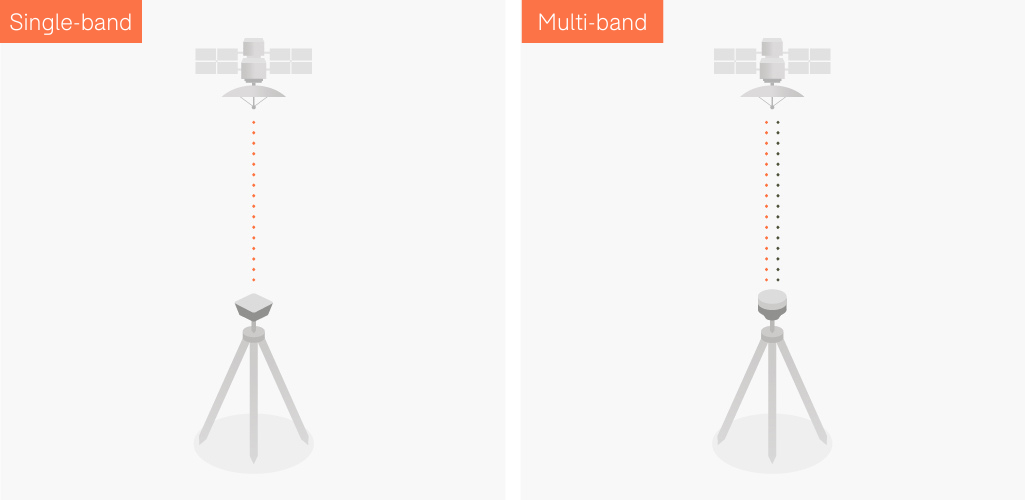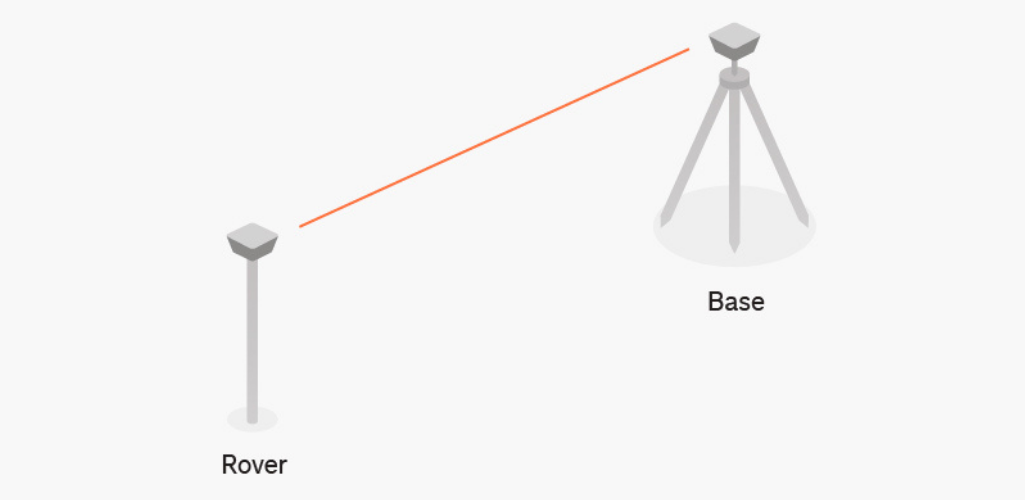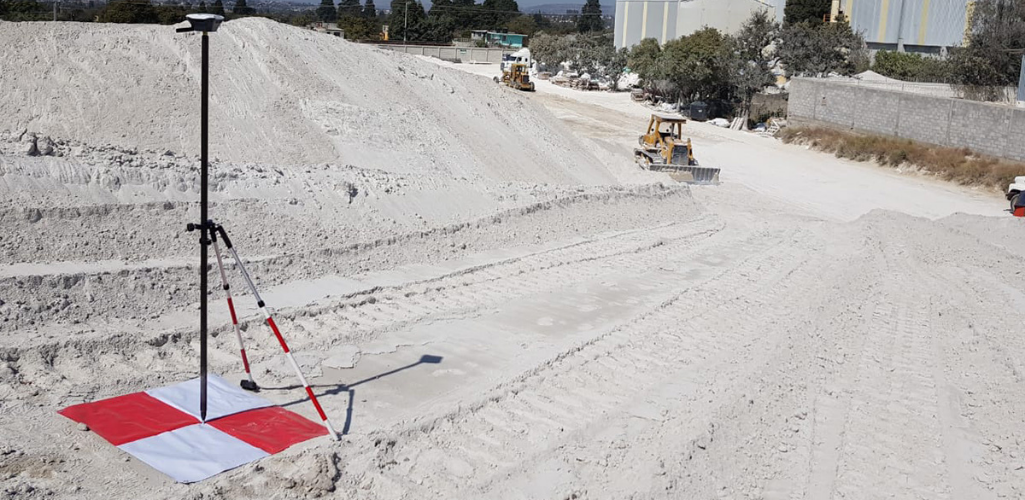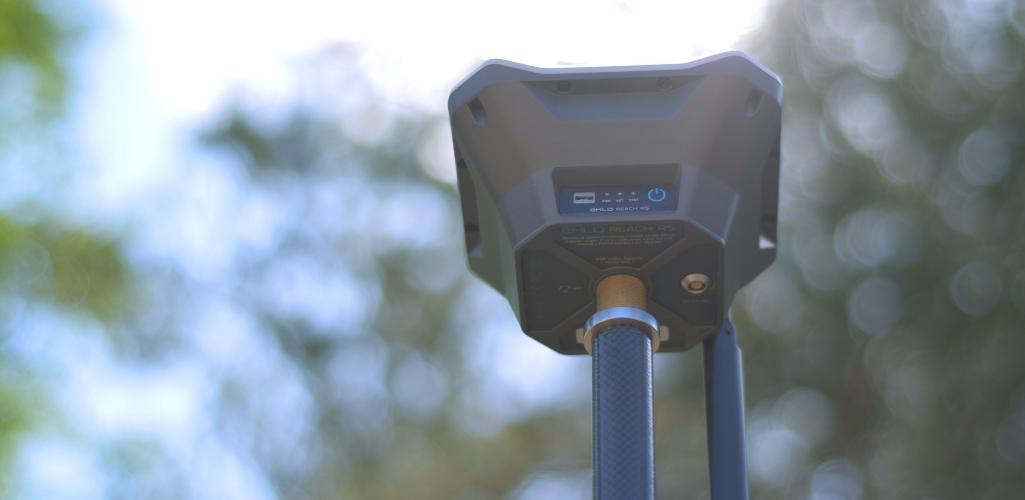
Technical
Single-band vs multi-band GNSS receivers
Single-band vs multi-band receivers: What are the differences and which is best? Find out in this in-depth guide. And learn more about the industry-leading Emlid Reach RS2 and RS+ RTK GNSS receivers and how they can benefit your surveying o ... Read More

Your guide to single-band and multi-band GNSS receivers;
Single-band receivers only obtain one frequency band from satellites, whereas multi-band receivers work with several frequency bands;
Multi-band receivers work better in urban areas, are more reliable in environments where the sky is partially blocked, achieve a fixed position quicker and offer a longer baseline - but they are more expensive;
For surveyors working in reasonable working conditions, over a shorter baseline and with an unobscured sky, then single-band receivers are a cost-effective option;
Both types of receivers are capable of centimetre-level absolute accuracy;
heliguy™ has partnered with Emlid to bring the cost-effective and industry-leading Emlid Reach RS2 and Emlid RS+ RTK GNSS receivers to our surveying portfolio. Find out the difference between the two.
When it comes to choosing the right GNSS receiver for your surveying project, it can get tricky.

Indeed, there are several things that need to be taken into account to ensure you pick the correct one for you. These factors include:
Tech specs
Your project specifics
Budget
In general, GNSS receivers can be divided into two major groups: Single-band and multi-band. Both come with their own set of mission-specific advantages.
In this blog, we'll provide some tips on how to choose the best receiver for your needs. We'll also compare the Emlid Reach RS2 (RTK GNSS multi-band receiver) and the Emlid RS+ (RTK GNSS single-band receiver), after heliguy™ partnered with Emlid to bring these highly-accurate solutions to our surveying portfolio.
Single-band vs Multi-band GNSS Receivers At A Glance
GNSS receivers work by receiving signals from satellites. Each satellite transmits radio signals in one or more frequency bands and satellites in different constellations use different frequencies.
Single-band receivers can only obtain one frequency band from the satellites, whereas multi-band receivers work with several frequency bands.

In turn, this has an impact on how multi-band and single-band receivers perform in the field, as we'll see in this article. These capability differences will go some way to helping you decide which is best for you.
The table below provides an overview of these key differences.
However, it is important to state that both single-band and multi-band receivers are capable of centimetre-level absolute accuracy.
Performance | Multi-band | Single-band |
Number of frequency bands | Several | One |
Time to find a fixed position | Quicker | Slower |
Baseline length (distance between base and rover) | Longer | Shorter |
Environment | Can perform if sky view is partially blocked | Requires open-sky environment |
Accuracy | High | High |
Cost | Higher | Lower |
Multi-band GNSS Receivers
Multi-band GNSS receivers can achieve a fixed position within seconds, using more satellite signals to establish this quicker.
The fact that multi-band receivers can process several frequencies enables them to maintain a robust performance, even if the sky view is partially blocked. This means that they can function well in urban areas, for instance.
Multi-band receivers can work on longer baselines (ie the distance between the base and the rover) compared to a single-band receiver.

This versatility enables you to work on different types of projects, whereby you might require different distances from the rover to the base on each occasion: For instance, a job near a city is likely to yield a nearby base, but a more rural operation will likely result in the base station being positioned further away.
Multi-band receivers are also able to achieve centimetre accuracy when working with Precise Point Positioning Services.
When To Choose A Multi-band Receiver
A multi-band receiver is an uncompromising choice.

If you are working in tough conditions, have a long baseline, and want to do the work faster, multi-band is an option to go for. However, they tend to be more expensive than single-band receivers.
Single-band GNSS Receivers
A single-band GNSS receiver has the same high accuracy as a multi-band receiver, and the added advantage of costing less.
However, it comes with some technical limitations, and, because more factors can influence the stable fix solution in the single-band receiver, reasonable working conditions are essential for achieving absolute accuracy.
For instance, single-band receivers need the open sky to work their best. Otherwise, it might be harder and take longer to establish a fixed position.

In fact, when it comes to establishing a fixed position, a single-band receiver is generally slower than its multi-band counterpart - regardless of conditions. This is because a single-band receiver can only process one kind of frequency (the L1 frequency). Therefore, it can take up to several minutes for a single-band receiver to get the fix solution.
However, you only need to wait this long at the start of the survey or when the fixed position is lost.
If the fixed position is lost, for example, under a tree, a fixed position can be recovered quicker once you are back in an unobstructed location.

Single-band receivers also have a much shorter baseline than multi-band receivers.
But they do make a great base for PPK or drone mapping, and point collection requires the same time as with the multi-band receiver.
When To Choose A Single-band Receiver
If you are sure you’re mostly working with an open sky view, fairly short baseline and have reasonable working conditions, a single-band GNSS receiver is an optimal and affordable choice for the majority of cases.
Multi-band Vs Single-band Receivers: Emlid Reach RS2 Vs RS+
heliguy™ has partnered with Emlid to add its industry-leading Reach RS2 and RS+ RTK GNSS receivers to our surveying portfolio.
Both solutions - which are weatherproof and can be operated in extreme environments - can be used for land surveying and drone mapping. They also have LoRa radio available for transmitting and receiving corrections.

The main difference between the two is that the Reach RS2 is a multi-band receiver, while the RS+ is a single-band receiver.
Reach RS2 also has a SIM-card slot, which means it can work with NTRIP through the 3.5G modem. In general, Reach RS2 is considered to be more advanced and designed for professional applications.
The table below provides an overview of the two solutions, to help you choose the best Emlid GNSS receiver for your use case.
RS2 | RS+ | |
Frequency bands | Multi-band | Single-band |
Time to first fix | 5 seconds | 1-2 minutes |
Positioning | H: 7 mm + 1 ppm V: 14 mm + 1 ppm | H: 7 mm + 1 ppm V: 14 mm + 1 ppm |
Baseline in RTK mode | Up to 60 km | Up to 10km |
Baseline in PPK mode | Up to 100 km | Up to 20km |
3.5G modem | Yes | No |
LoRa radio | Yes | Yes |
Multi-band Vs Single-band Receivers: Summary
When choosing between single-band and multi-band GNSS receivers, you need to think of your work conditions, and your budget.
Both single-band and multi-band receivers obtain the same level of accuracy in their perfect conditions – so, first of all, you need to analyse your case.
For example, if you work in a field on the relatively short baseline, a single-band receiver is enough to perform an accurate survey and also save you a penny.
However, if you work in areas with a partially-blocked sky view, or the base station is too far or you simply don’t want to bother with possible tech limitations, stick to the multi-band.
With this in mind, Emlid's RS2 and RS+ are industry-leading receivers which can be used by traditional land surveyors or by drone operators, and are a cost-effective addition to the GNSS-equipment market.
To discuss Emlid solutions with heliguy™, contact us.
